In a remarkable discovery, a Russian farmer digging on his land unearthed an ancient burial mound containing the remains of a nomadic “royal” dating back 2,000 years.
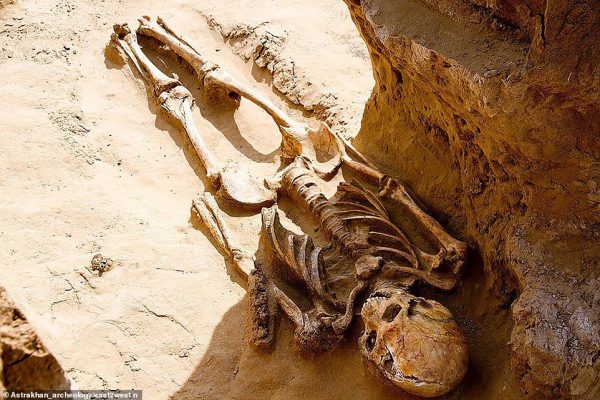
The burial site, located near the Caspian Sea in southern Russia, yielded stunning treasures, including gold and silver jewelry, weaponry, valuables, and artistic household items. The chief of the nomadic tribe was buried with a display of opulence, suggesting high-ranking status within the society.
The extraordinary find was made when local farmer Rustam Mundayev’s spade struck an unusual object, later revealed to be an ancient bronze pot, near his village of Nikolskoye in the Astrakhan region. The discovery prompted an expedition organized by the Astrakhan History Museum to investigate further.
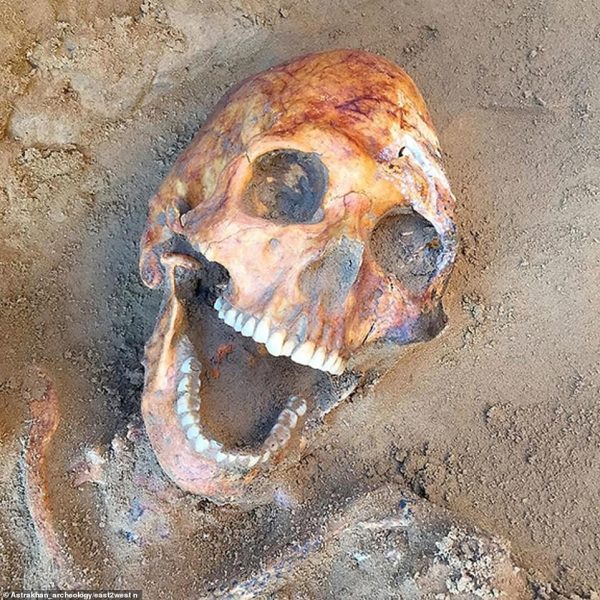
“As soon as the snow melted, we organized an expedition to the village,” said Georgy Stukalov, the museum’s scientific researcher. “After inspecting the burial site, we understood it to be a royal mound, one of the sites where ancient nomads buried their nobility.”
The burial is believed to belong to a leader of a Sarmatian nomadic tribe that dominated the region until the 5th century AD. The excavation, spanning 12 days, uncovered multiple artifacts, including gold jewelry adorned with turquoise, inserts of lapis lazuli, and glass.
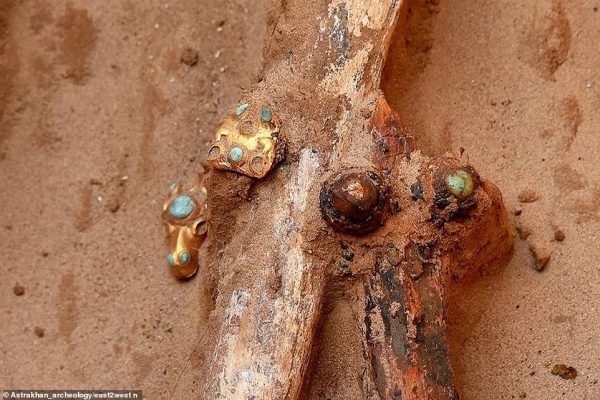
The most significant find was a male skeleton buried inside a wooden coffin, with the chief’s head raised as if resting on a pillow. The chief wore a cape decorated with gold plaques and was accompanied by an array of possessions, such as knives, gold items, a small mirror, and various pots, indicating elite status.
Among the intricate jewelry discovered were a gold and turquoise belt buckle, the chief’s dagger, and a tiny gold horse’s head buried between his legs.
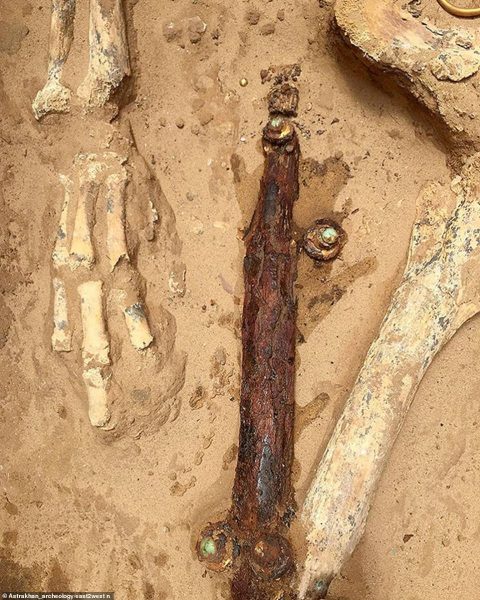
Adjacent to the chief’s burial, a woman with a bronze mirror was found buried with a sacrificial offering of a whole lamb and various stone items whose significance remains unclear. Another grave contained the skeletal remains of an elderly man, along with the head of his horse, adorned with an intricate silver and bronze harness.
Notably, a young man with an artificially deformed, egg-shaped skull was also found in the burial mound. Skull deformation was a common practice among various ancient groups like the Sarmatians, Alans, Huns, and others, signifying a person’s special status and noble roots.
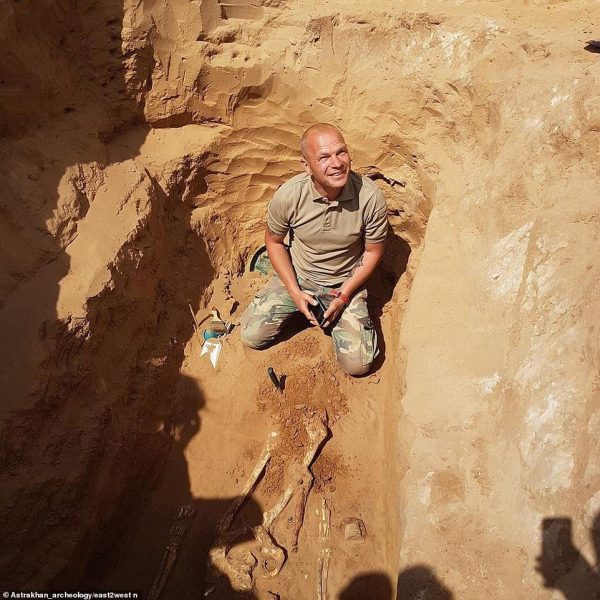
The artifacts, dating back to around 2,000 years ago, offer a unique glimpse into the customs and lifestyles of the Sarmatian nomadic tribes during a significant period in history. Excavations at the site are ongoing, promising further insights into the dawn of civilization in the region.





